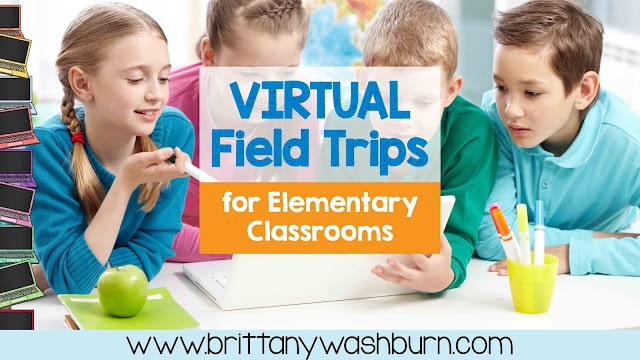6 Tools for Virtual Field Trips for the Elementary Classroom
Virtual Field Trips for Elementary Classrooms
Field trips are informal learning experiences that get students out into the world, exploring the world and students’ interests. Trips to museums, parks, historical sites, and more show students that learning (and life) happens outside the classroom, too. During field trips, students discover new things and learn in authentic environments, placing classroom content into new contexts. Virtual field trips, however, are enriching and exciting internet trips that allow individuals to visit destinations they might otherwise be unable to tour. Specifically, virtual field trips are changing the way elementary school students explore our world! Teachers are currently incorporating these virtual field trips into their classrooms to supplement an upcoming live field trip, increase the frequency and variety of student excursions, or altogether replace the inaccessible or expensive field trip.
Virtual field trips instantly connect students with learning opportunities they may not get to experience otherwise. And it all happens from the comfort of your classroom computer. There are a number of virtual field trip resources available on the web. Some of them are listed below.
This can be used to pull specific places you’d like to take your class on a virtual field trip. Imaginative technology enhances excellent photography: hook kids into topics by taking them “on location.” Use this tool to find winning, beautiful locations, integrate with other Google tools, then return to the meat of your lesson planning. The Street View in Google Maps can be used to walk down streets, look at monuments and create customized field trips without having to leave the classroom.
2. Expeditions
Teachers can use Expeditions to supplement their current curriculum with VR field trips. Google Expeditions is a virtual reality teaching tool that lets you lead or join immersive virtual trips all over the world – get up close with historical landmarks, dive underwater with sharks, even visit outer space! The handy travel guides built into each expedition are excellent starting points for teachers to gain confidence in the VR world. Beginning with a small group of “travelers” may also help teachers feel more comfortable before diving into a full-class VR field trip.
3. Discovery VR
The Discovery VR app has always been about driving curiosity – exploring new places, characters, and ideas. Exciting videos will pull users into virtual worlds that are hard to leave behind. With VR videos, Discovery embraces a new opportunity to tell these amazing stories immersing you in experiences like never before.
The VR experience is different each time it’s explored since users can focus their attention on any part of the
360-degree video. Multiple viewings, especially using a headset, will help students explore the content in a new way and notice more details with each visit to the VR world.
360-degree video. Multiple viewings, especially using a headset, will help students explore the content in a new way and notice more details with each visit to the VR world.
4. Google Maps Engine
Google maps engine can be used to create your own maps. You can set the route for your students to take, add resources such as photo’s, video and text. You can also set questions for your students to answer once they get to each spot on the journey.
5. Google Earth Walks
This is a fantastic website with lots of resources. Teachers have created questions to ‘real world’ scenarios using Google Maps.
6. Digital and Virtual Field Trips
http://eduscapes.com/tap/topic35.htm This site offers one-stop shopping for all your virtual field trip needs; purpose, how to, and links.
Bottom Line
Budget restrictions do not necessarily mean that your students can’t have rich and diverse experiences beyond the walls of their school. Take a virtual trip and show them the world! Indeed, the sky is the limit on the places that you can go and the ways in which you can use this tool to enhance student engagement in the classroom.



